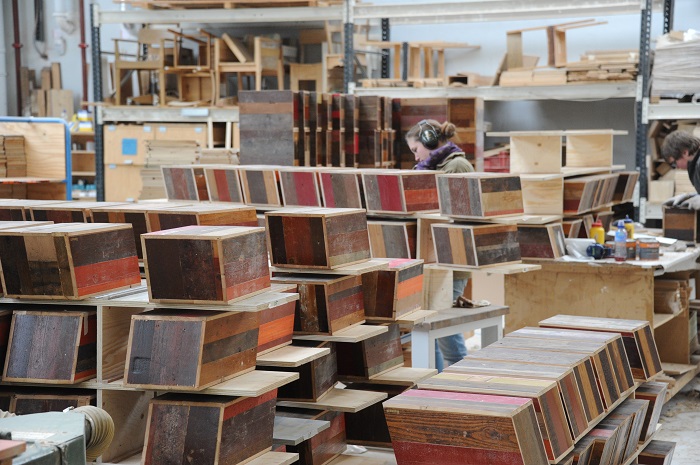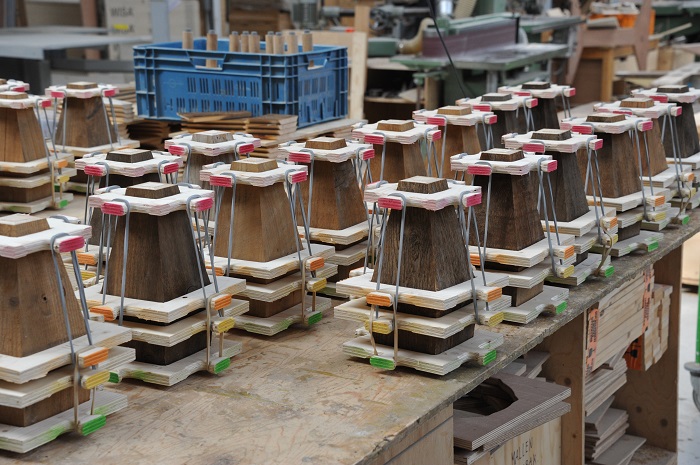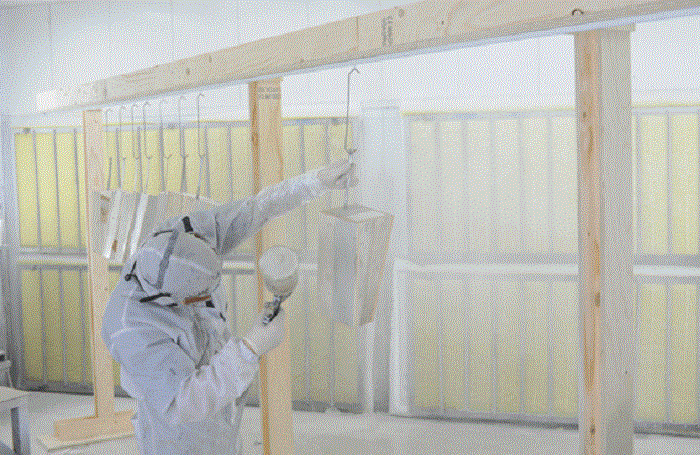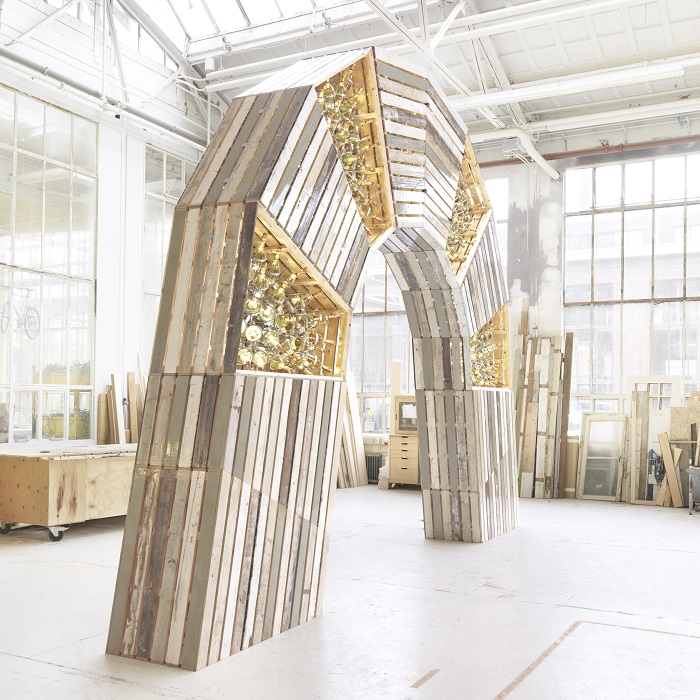It is quite an honour when you are asked to design boxes for Ruinart, the oldest champagne house in the world (established in 1729). They were the first to use the stone quarries deep under the ground in Reims to age their wines, the first to re-establish the use of the old bulbous bottle shape, and the first at the end of the eighteenth century to package bottles in wooden boxes. This spherical bottle was originally necessary because the regular bottles were unable to withstand the pressure of the bubbles. Once regular bottles could be used, all of the champagne houses took advantage of this revolutionary possibility.
With this historical understanding in mind, I accepted the commission to design new wooden boxes. Incidentally, this project is in perfect keeping with Ruinart’s tradition of working with artists. The first such collaboration took place in 1895. Since this concerned huge quantities, I hoped that we would not have to make them all ourselves. But it quickly became apparent that the boxes did indeed have to be made from scrap wood and perfectly finished, so we would clearly be delivering a 100% in-house produced product. I could write an instructive book about the making of these boxes and the tremendous efforts and problems encountered along the way.
The box shape is based on the shape of the bottle. After all, if large quantities need be stored and transported, it would be a shame to be transporting air. So we designed the box to fit as tightly as possible around the bottle. This resulted in a pyramid-like shape that can be stacked very compactly. The shape is also reminiscent of the keystones used in doorways and to make bridges (in larger form, of course) in the past. Arches, circles, wheels, entire towers or a life-size arch like the Arc de Triomphe (to keep things French)…I could picture it all in my mind’s eye.
The box was like a building stone, like the stones from the Ruinart quarries. But the design did not end with that one wooden box; it developed into a complete campaign peppered with history. A ‘complicated’ story emerged that, fortunately, resulted in an order: Ruinart ordered a gigantic number of boxes in various versions and human-sized building stones for making all kinds of structures, including the ‘Arc de Triomphe’ several metres high that I had envisioned.
The campaign was officially launched on 28 March with the presentation of the boxes, the small arches and the enormous installation. Publicity could finally be given to the project. The presentation was not at the most insignificant place in Paris either: La Galerie Courbe in the Grand Palais, a space that only Chanel and Yves Saint Laurent had been permitted to use until then.
I can imagine that you’re thinking, “All this fuss and bother for a little champagne?” That kind of criticism soon disappears when you notice the care that surrounds the product, which has a distinguishing taste – apparent to even a layman. And, if that’s not enough, just try to say something negative about Ruinart in France. It’s got millions upon millions of patrons and patronesses. In a nutshell, the champagne itself is an experience, one that will soon also be available for experiencing in our restaurant.
This post is also available in: NL
« Back to blog


